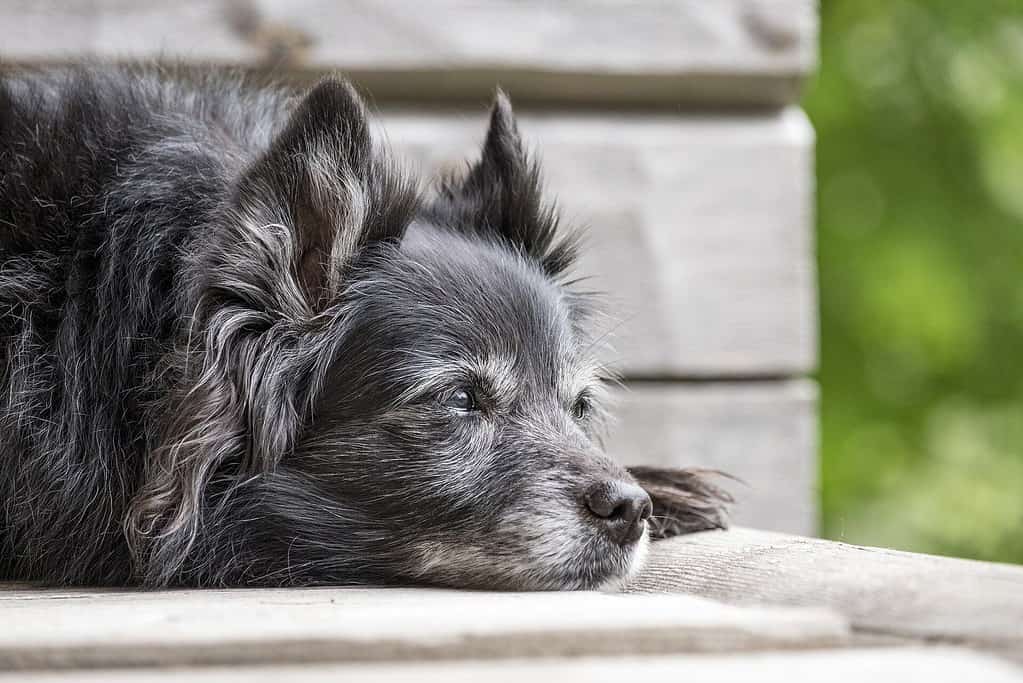Difficulty sleeping is recognized as one of the initial indications of dementia in humans. This includes waking up at night, staying awake longer, and daytime sleepiness. Now, researchers have found similarities in our furry companions, as dogs with Canine Cognitive Dysfunction, the canine equivalent of dementia, also faced sleep difficulties.

In a study involving elderly dogs, scientists observed that those with symptoms of Canine Cognitive Dysfunction (CCD) took longer to fall asleep and had shorter periods of rest. Moreover, the severity of dementia was linked to a reduction in the amount of rapid eye movement (REM) sleep, indicating a decrease in the likelihood of dreaming.
“Our study is the first to evaluate the association between cognitive impairment and sleep using polysomnography – the same technique as used in sleep studies in people – in aged dogs,” senior author Dr Natasha Olby, a professor of veterinary neurology and neurosurgery at North Carolina State University, said in a media statement.
Dogs’ sleeping patterns
CCD is a progressive neurological disorder that impairs a dog’s cognitive abilities, behavior, and memory. Its symptoms and underlying causes are comparable to those of Alzheimer’s disease in humans. It’s frequently seen in older dogs, with studies indicating that more than half of dogs aged 11 years or older display signs of cognitive decline.
The researchers worked with 28 senior dogs between 10 and 16 years of age, which corresponds to between 81% and 106% of their average lifespan, depending on size. Their owners had to fill out a questionnaire about their dogs to rate the severity of symptoms of CCD, such as disorientation and poor social interactions.
The study then continued with a series of cognitive tests on the dogs, measuring their attention, working memory and executive control. For example, in one of the tests, dogs had to retrieve a treat from a horizontal transparent cylinder by accessing it from one end. This was also made more difficult by blocking off her or his proffered side.
The researchers also did polysomnography (sleep studies) in a quiet room with dim light and white noise in a sleep clinic. Dogs were allowed to spontaneously take afternoon naps, while electrodes measured their brain and heart activity and eye movements. The measurements stopped if the dogs got anxious or tried to leave.
Dogs that scored higher on dementia and performed poorly on the detour test took a longer time to fall asleep and had reduced sleep duration, the study showed. Additionally, dogs with lower memory scores exhibited alterations in their electroencephalograms during REM sleep, indicating reduced slow oscillations and shallower REM sleep.
While the findings show similarities between dementia in humans and CCD, the researchers said it’s still unknown if these changes happen during dogs’ nighttime sleep rather than their afternoon naps. The next step, Olby said, will be to follow dogs over time during their senior years to identify early markers in their sleep-wakefulness patterns.
The study was published in the journal Frontiers.






